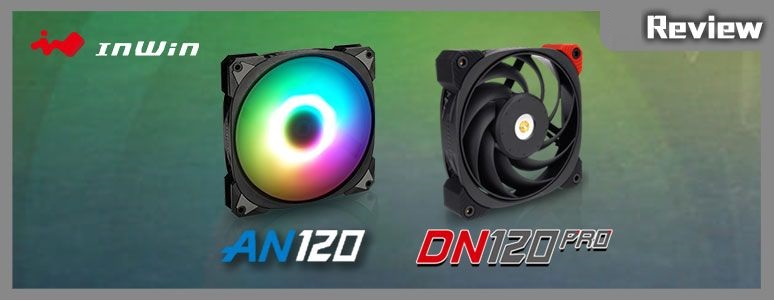
InWin has unveiled their next-gen Neptune series performance fans, the DN120/DN140 Pro. These fans are powered by a three-phase six-pole motor, feature an FDB dynamic bearing, and have a copper core, offering both potent cooling and silent operation. Concurrently, its counterpart, the AN120 RGB, shares the same fan blueprint but incorporates long-enduring oil-sealed bearings. This fan offers ARGB light effects and efficient heat management. By comparing the PQ curves of these two models, one can discern the distinctions between high-performance fans and regular ones.
DN120 Pro Features:
- Size: 120 x 120 x 25 mm
- Materials: PBT and Silicon
- Voltage: DC 12V
- Power: 1.44W
- Speed: PWM 900 – 2200 +/- 10% RPM
- Airflow: 24.15 – 60.56 CFM
- Pressure: 0.45 – 2.83 mm/H2O
- Connections: Direct wire; 4-Pin Motherboard Connector (12V, PWM)
- Noise: 20.3 dB(A) at standard settings
- Bearing: FDB Bearing
- Lifespan (MTBF): Over 60,000 hours
- Weight: 245 g or 0.54 lbs
- Guarantee: 6-year warranty
AN120 RGB Features:
- Size: 120 x 120 x 25 mm
- Materials: PBT and PC
- Voltage: DC 12V
- Power Range: 1.92W to 2.16W
- Speed: PWM 900 – 2200 +/- 10% RPM
- Airflow: 23.87 – 60.1 CFM
- Pressure: 0.36 – 2.27 mm/H2O
- LED: Customizable RGB
- Connections: Direct wire; 4-Pin for Motherboard (12V, PWM), 3-Pin for ARGB (5V)
- Noise: 20.5 dB(A) at standard settings
- Bearing: Durable oil-sealed design
- Lifespan (MTBF): Over 36,000 hours
- Weight: 541 g
- Guarantee: 3-year warranty
A quick look at InWin Neptune DN Pro/AN/DN series fansInWin
The Neptune series from InWin comprises three distinct fan lines: DN Pro, AN, and DN. In essence, the DN Pro is tailored for high-performance cooling needs, whereas the AN is a standard ARGB fan. The primary distinction between DN and AN is the absence of RGB in the DN series, making it more aligned with System Integrators for bulk shipping and installation.
To break it down, InWin’s Neptune DN Pro is a high-performance fan, while the Neptune AN is an RGB fan. Though both fans share the same blade and frame design, the DN Pro boasts superior specifications in motor, materials, and other facets, ensuring it fulfills the needs of high airflow, pressure, and minimal noise typical of top-tier fans.
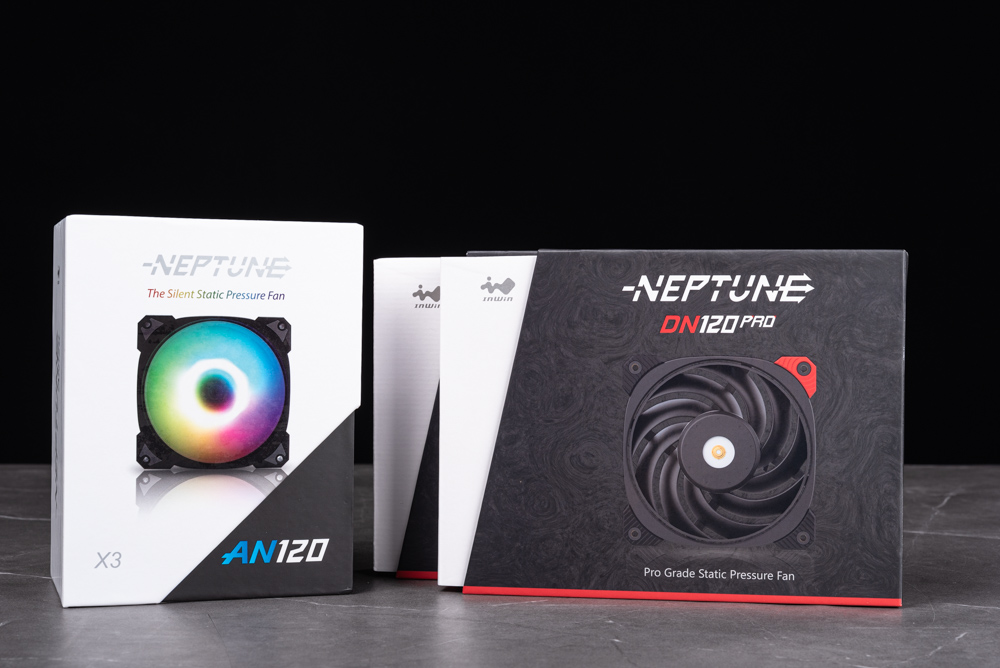
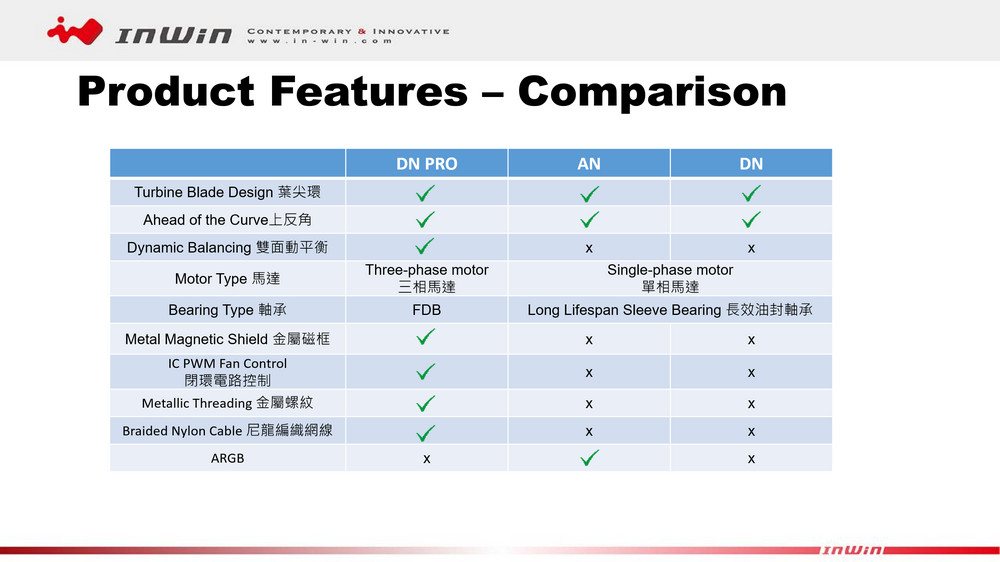
InWin Neptune DN120 Pro performance fan unboxing
While the allure of vibrant RGB fans often captures gamers’ attention, true performance fans are what really address their cooling needs. InWin’s Neptune performance fan lineup, which includes the DN120 Pro and DN140 Pro, is engineered for this purpose. Both models are powered by three-phase six-pole motors, featuring FDB dynamic bearings, copper cores, metallic magnetic frames, and dynamically balanced fan blades. This meticulous design ensures optimum stability during fan operation, enabling a harmonious blend of intense cooling and quiet performance.
Fresh out of its packaging, the Neptune DN120 Pro boasts a speed spectrum of PWM 900 – 2200 +/- 10% RPM, delivering an airflow between 24.15 – 60.56 CFM and an air pressure ranging from 0.45 – 2.83 mm/H2O. Remarkably, it operates at a hushed 20.3 dB(A). Furthermore, it comes with a 4-pin braided mesh PWM controller that supports serial connections. To enhance flexibility, an extension cable for motherboard connectivity and a unique set of screws are also included.
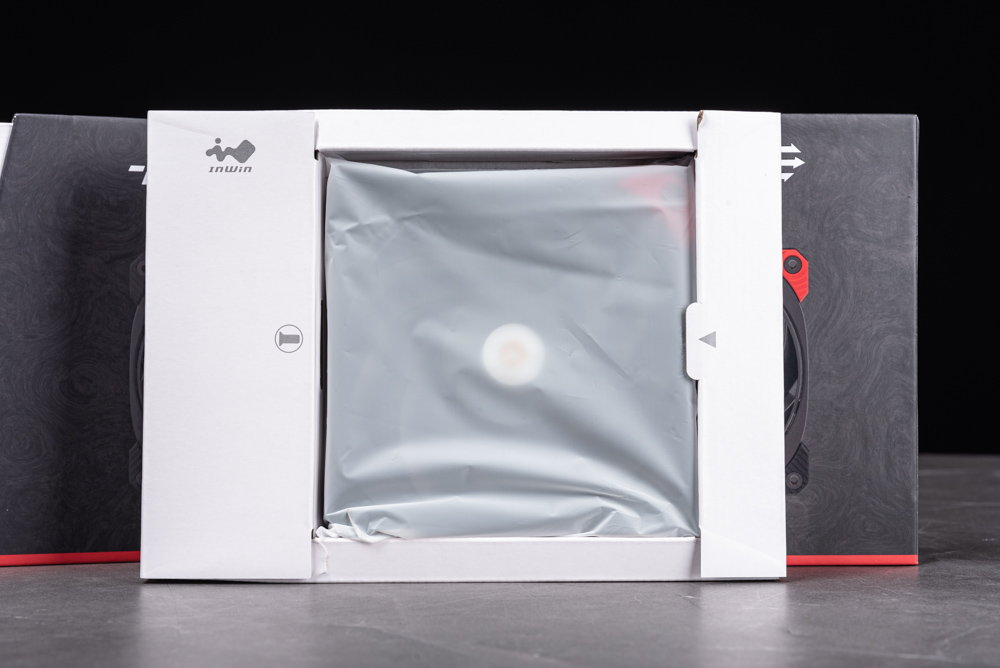
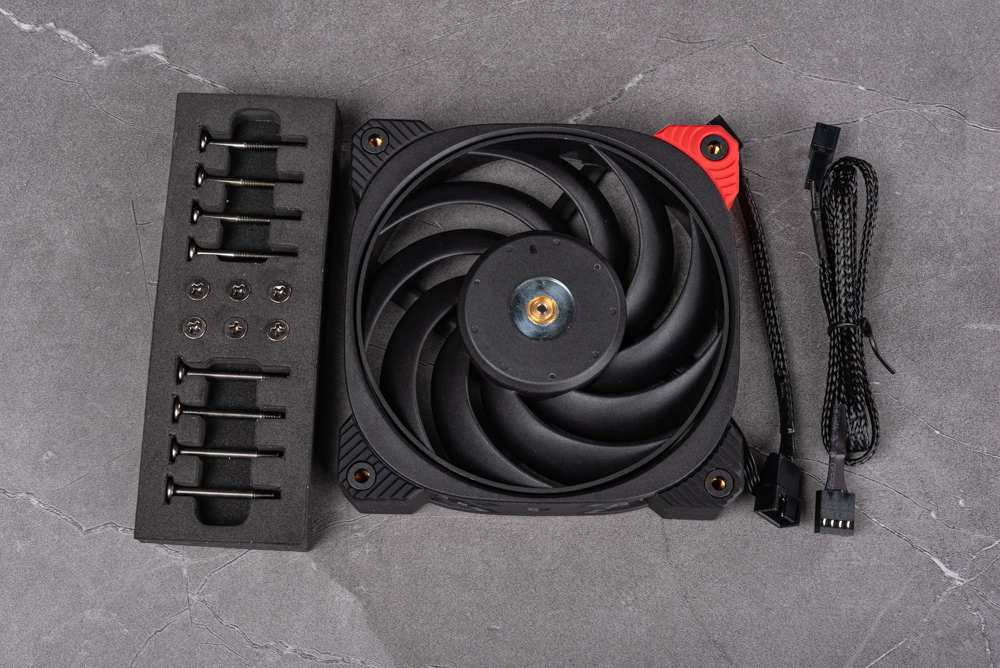
The Neptune DN120 Pro boasts a design that incorporates a three-phase six-pole motor, FDB dynamic bearings, and a copper midsole. This design ensures the fan is smoothly powered by magnetic force. The integration of the FDB dynamic bearings combined with the copper midsole means the fan blades can operate at elevated speeds with enhanced stability. This not only prolongs the fan’s lifespan but also significantly amplifies airflow, boosts air volume, and diminishes noise production.
Gamers can manually spin the DN120 Pro’s fan blades and directly compare its stability to that of typical two-phase motor fans, feeling the difference in the process.
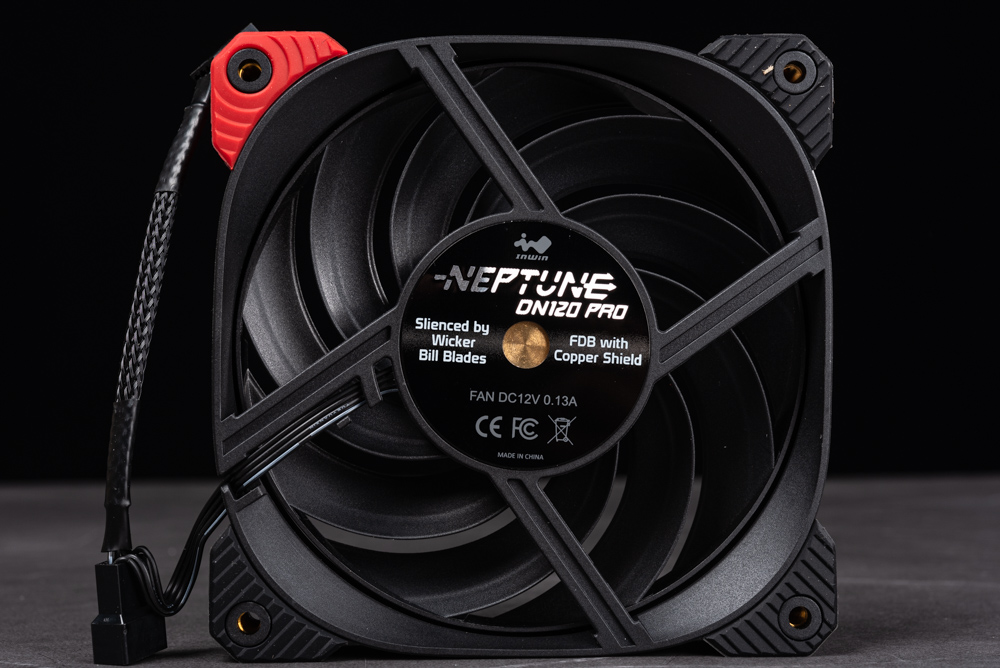
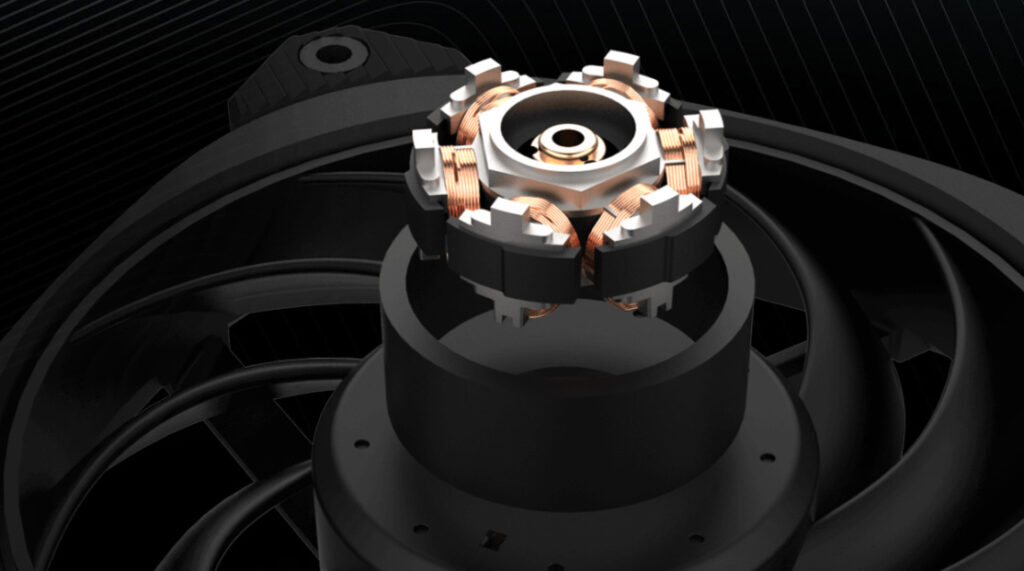
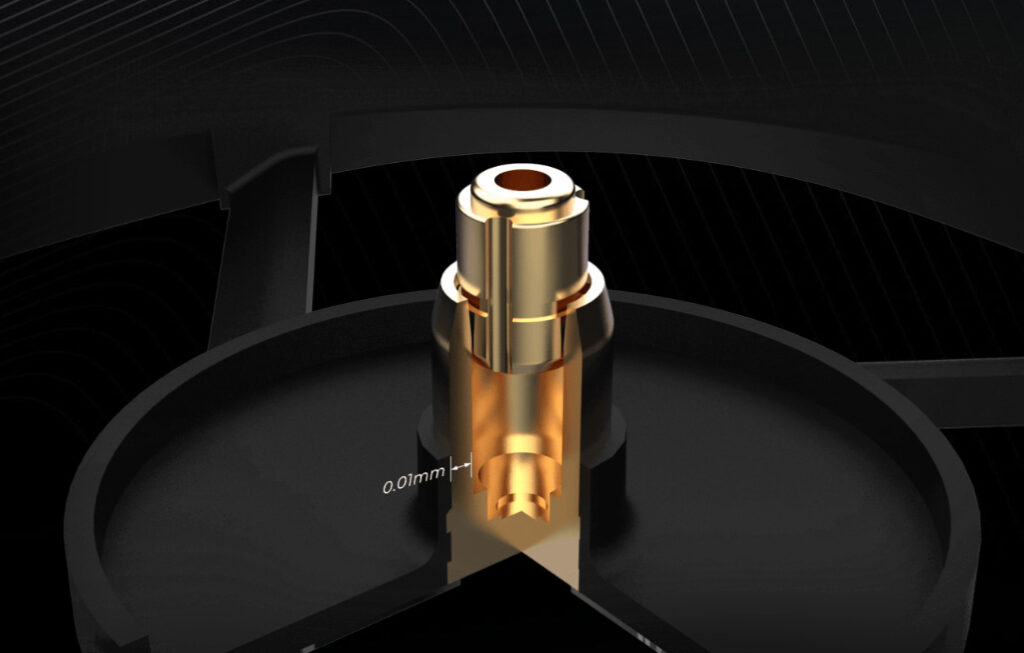
The fan blade is crafted as a single-piece axial fan, optimizing airflow concentration and enhancing wind pressure. Throughout its manufacturing, there’s a meticulous examination to gauge the blade’s balance. To ensure the fan blade’s smooth operation, material is added to achieve dynamic balance. This procedure guarantees optimal stability during the blade’s rotation, maintaining consistent airflow and air volume while minimizing the noise caused by wind shear.
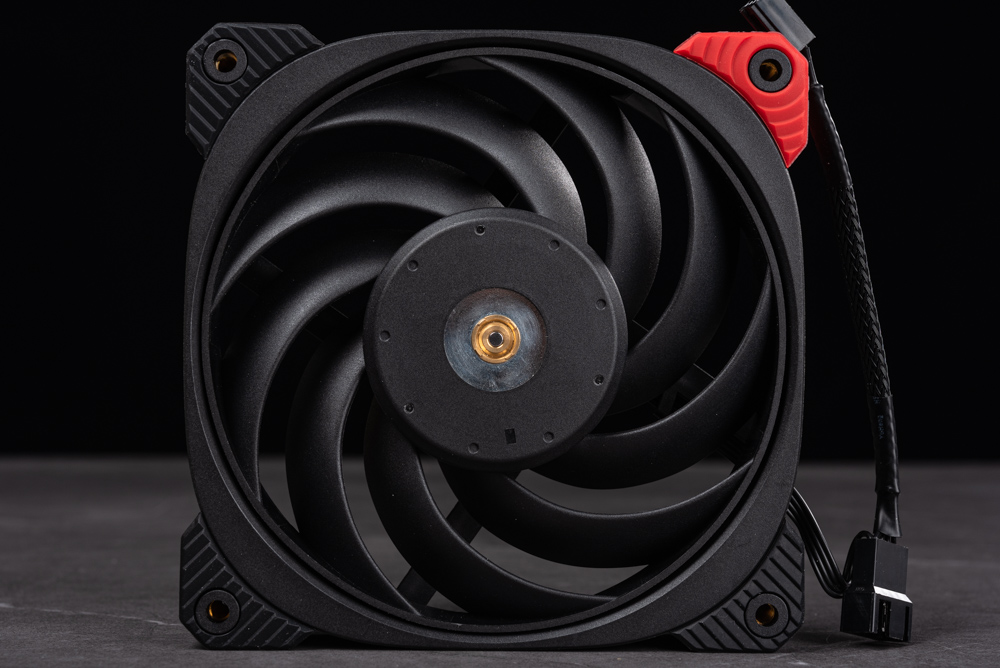
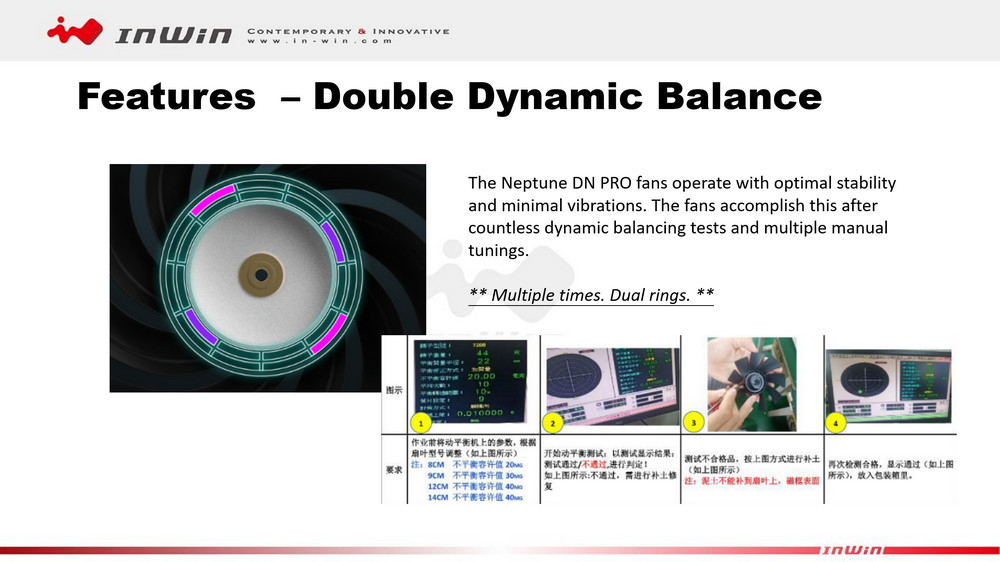
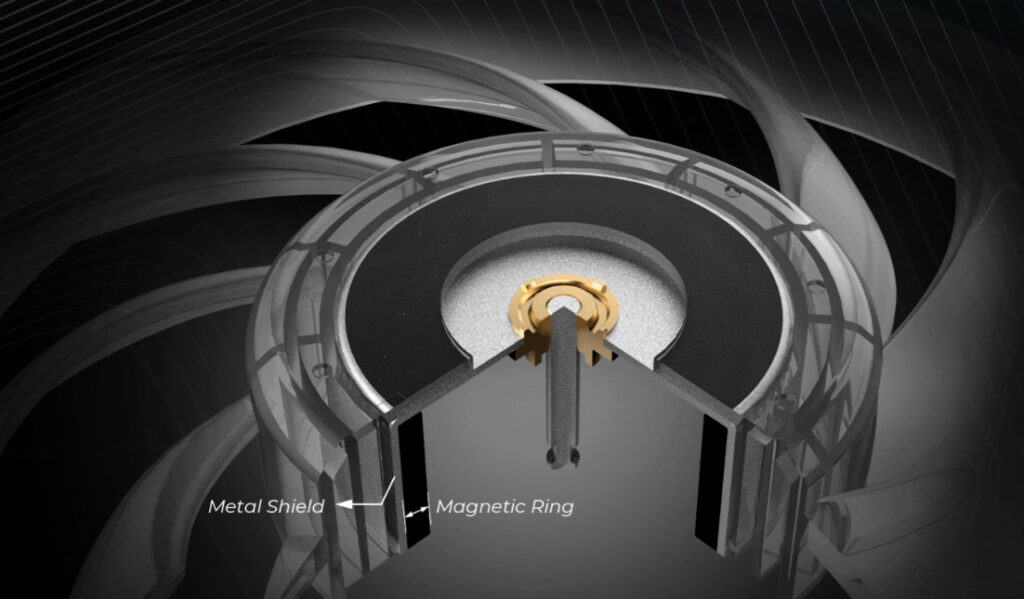
The Neptune DN120 Pro incorporates “metal copper pillars” in its fan mounting points, necessitating the use of specialized screws. The package includes standard fan mounting screws as well as two lengths of screws for water-cooling radiators. This design not only simplifies installation for users but also reduces the chance of slippage during setup.
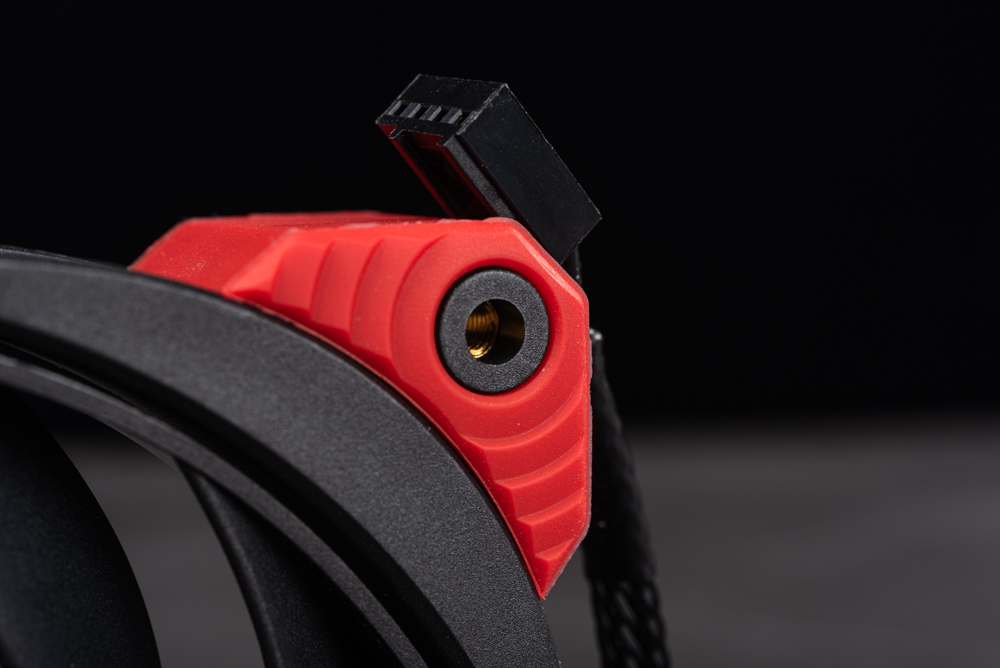
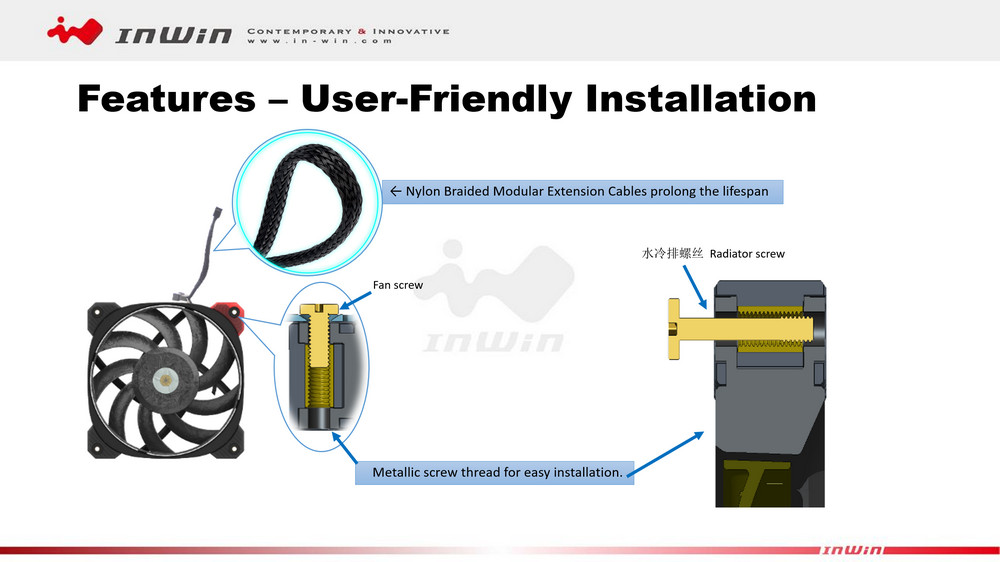
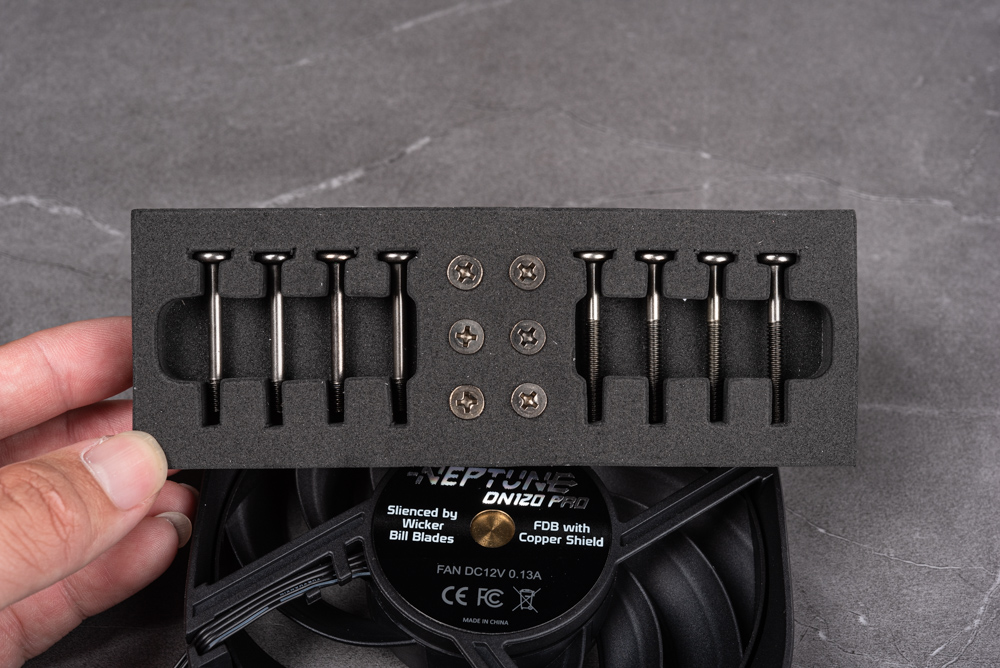
The fan employs a 4-Pin PWM connector, with the lead-out wires being encased in a braided mesh for durability and aesthetics. These wires are designed for serial connections. Additionally, a 500mm extension cable is included in the package.

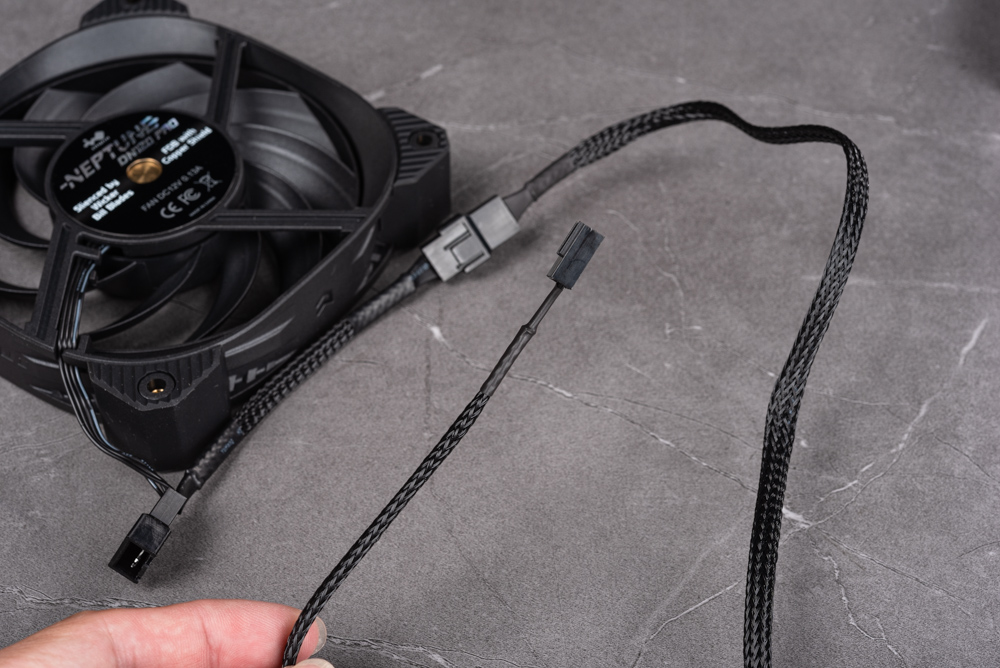
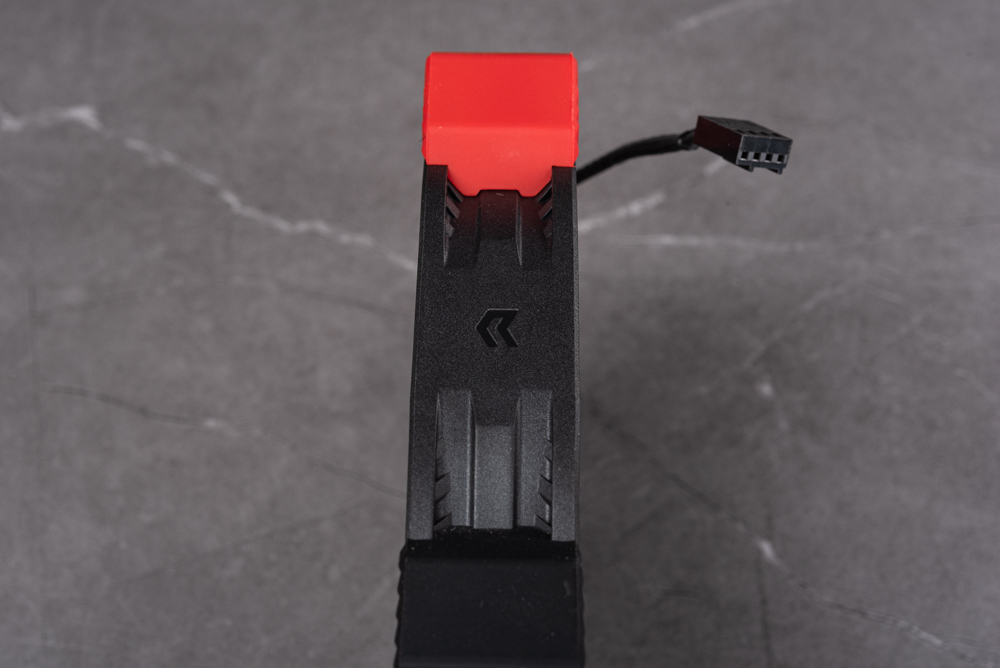
InWin Neptune AN120 RGB fan unboxing
The standard edition of the Neptune DN120 Pro is the Neptune AN120, which aligns more with the popular RGB trend. While both models share the same axial fan blade and frame configuration, the AN120 opts for a single-phase motor typical of mainstream fans and employs durable oil-sealed bearings. Its fan speed can range from PWM 900 – 2200 +/- 10% RPM. However, it delivers a slightly reduced airflow of 23.87 – 60.1 CFM and air pressure of 0.36 – 2.27 mm/H2O, making it a tad less powerful than its Pro counterpart. Notably, the Neptune AN120 is exclusively available in sets of three.
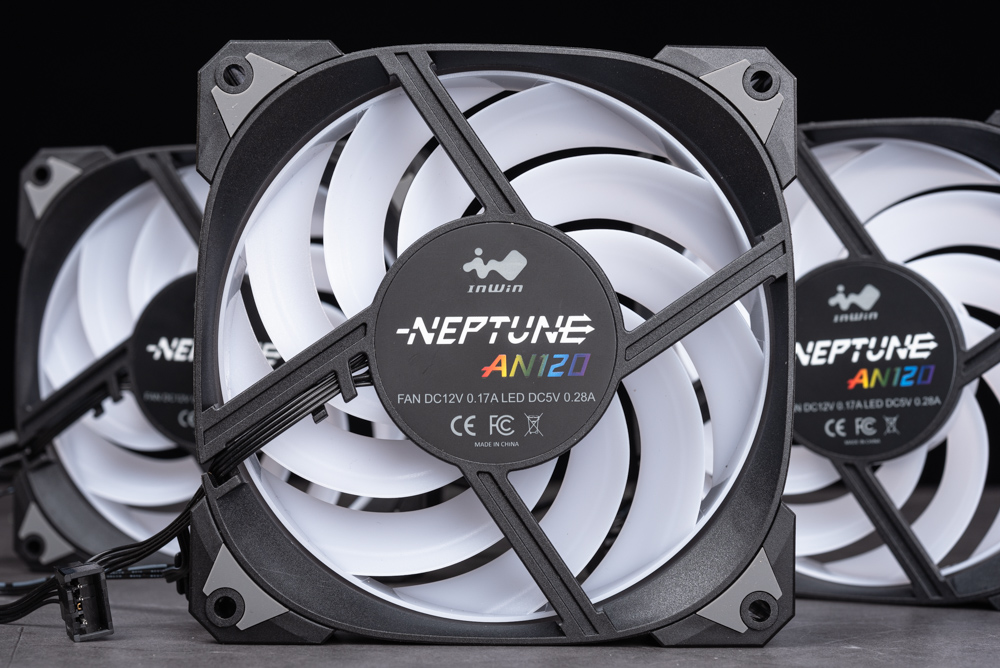
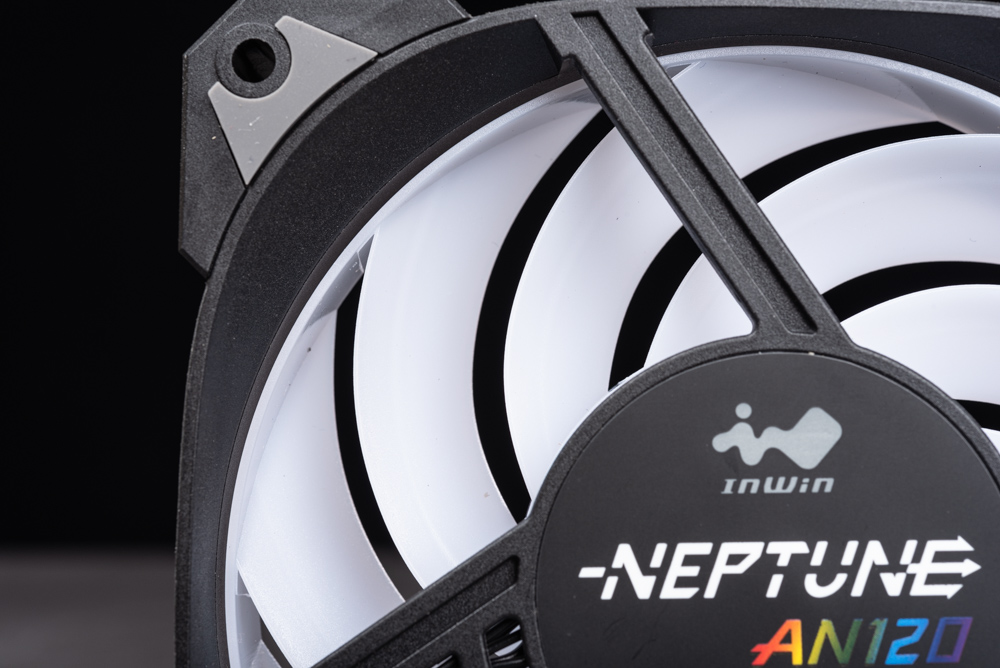
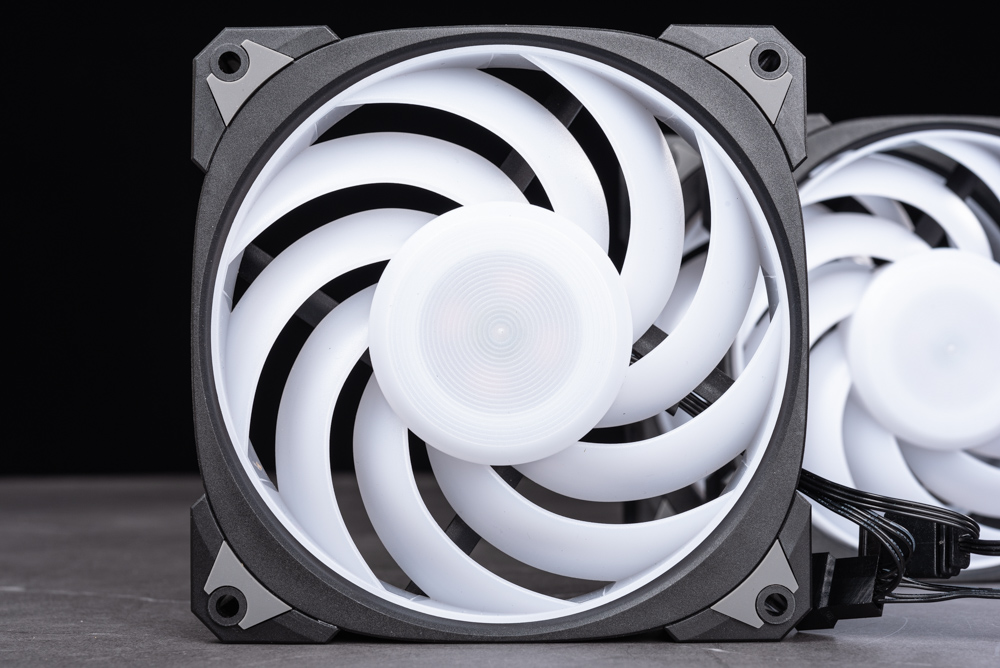
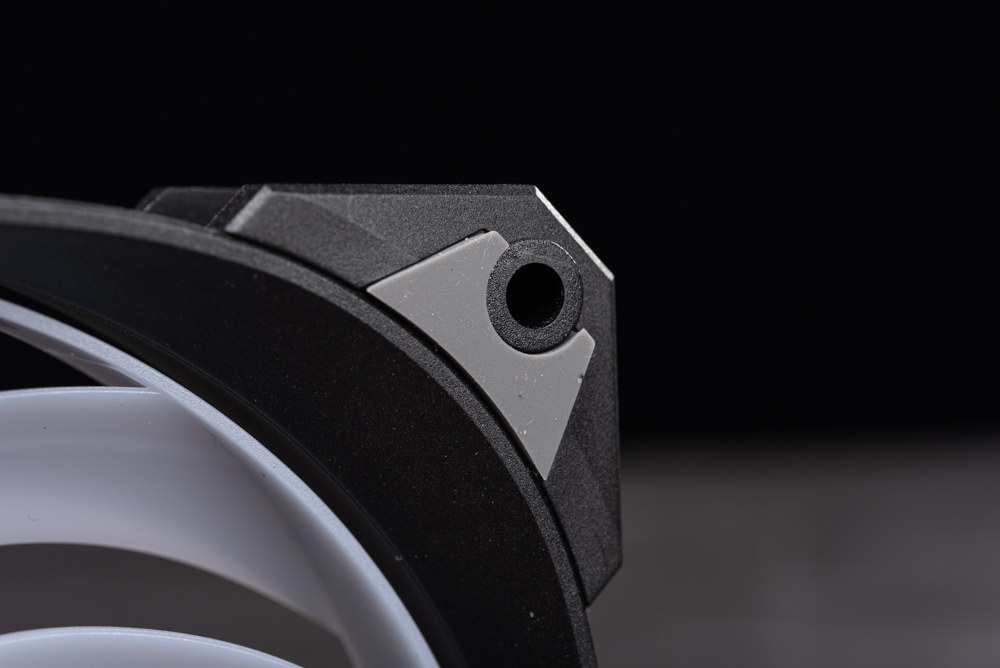
The DN120 Pro comes with both 4-Pin PWM and 3-Pin ARGB short serial cables. The package includes 2 PWM and 2 ARGB extension cables for added flexibility. Additionally, the ARGB cables feature clasps to guarantee a stable and secure connection.
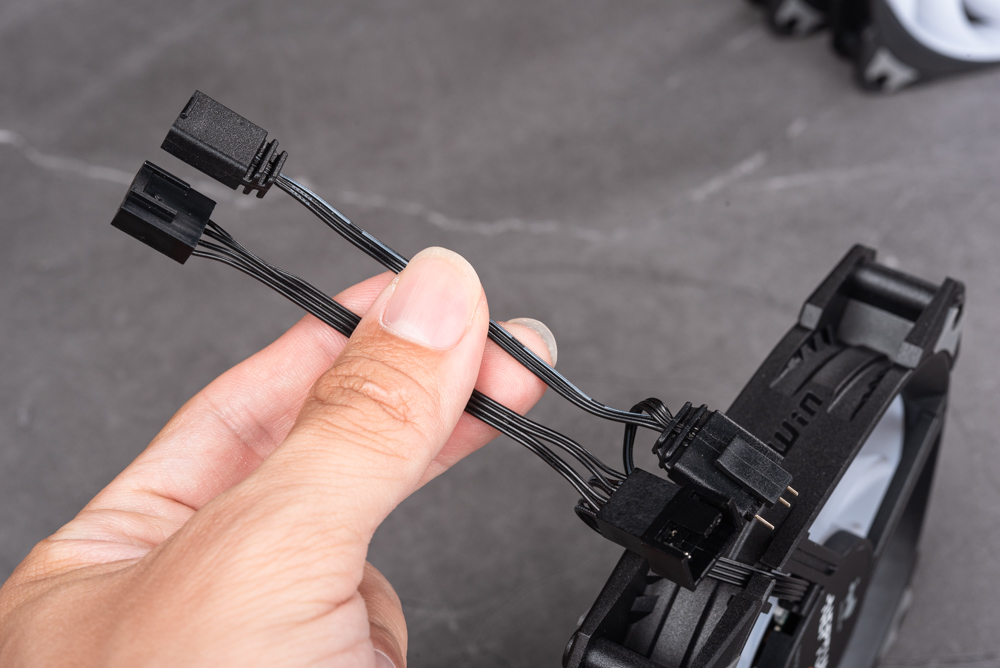
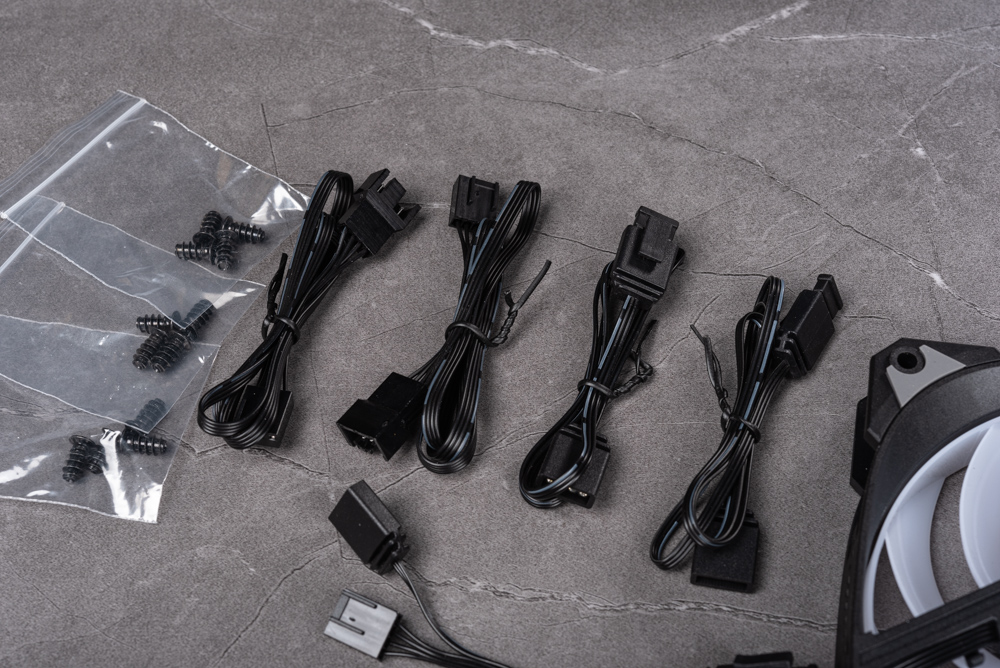
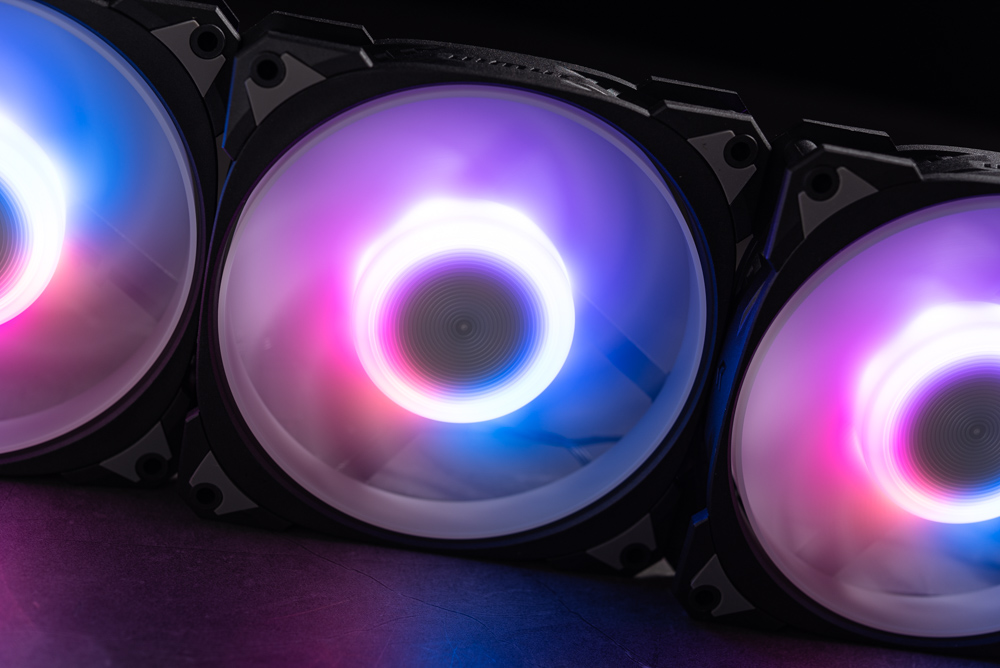
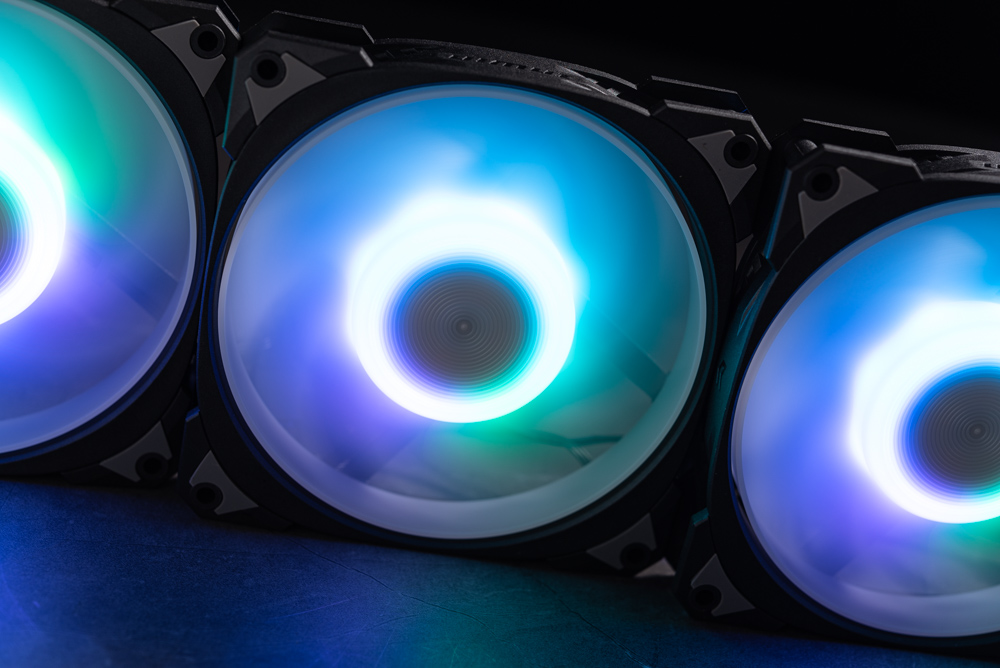
DN120 Pro, AN120 RGB fan PWM speed corresponding to the PQ curve
Firstly, the PQ characteristic curve of the DN120 Pro illustrates the relationship between air pressure on the Y-axis and air volume on the X-axis. In the provided chart, the DN120 Pro is represented by the yellow line, while a comparative fan is depicted by the orange line. The impedance for the fan is denoted by the chassis (shown as a white dotted line) and the liquid cooling radiator (indicated by a blue line). The intersection of the PQ curve with the respective impedance lines allows one to discern the air volume and wind pressure the fan can deliver under equivalent impedance conditions.
When funneled through a liquid cooling radiator, the DN120 Pro sustains an airflow of 45 CFM and an air pressure of 1.5 mm/H2O, outperforming other fans in its bracket. Furthermore, its noise output remains at a subdued 20.3 dB(A), quieter than typical background noise levels.
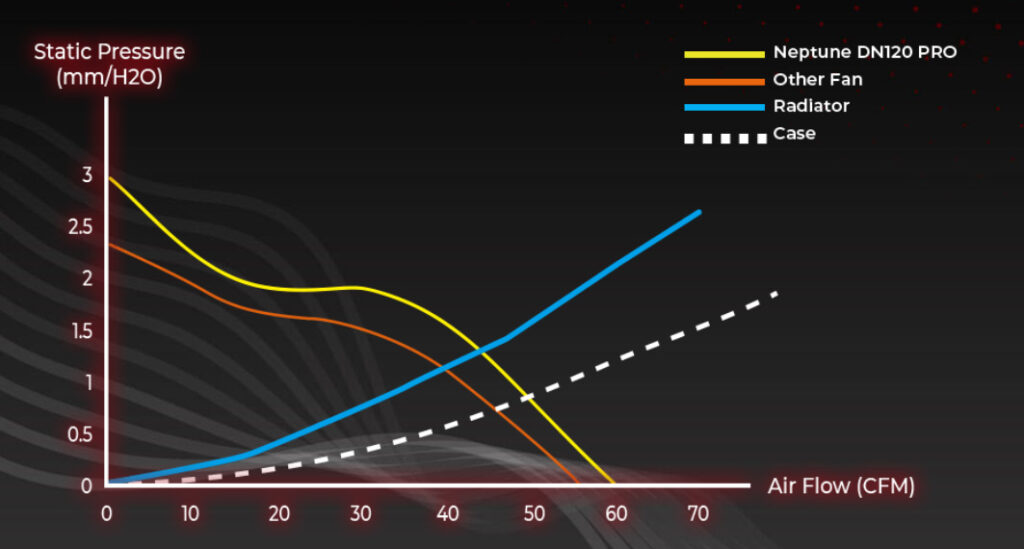
Moreover, the DN120 Pro utilizes a more advanced PWM IC for speed regulation. By manually adjusting the fan speed percentage via the motherboard, it’s observed that the fan speed begins a consistent rise from 20% and plateaus at 90-100%, achieving a stable speed of 2224 RPM.
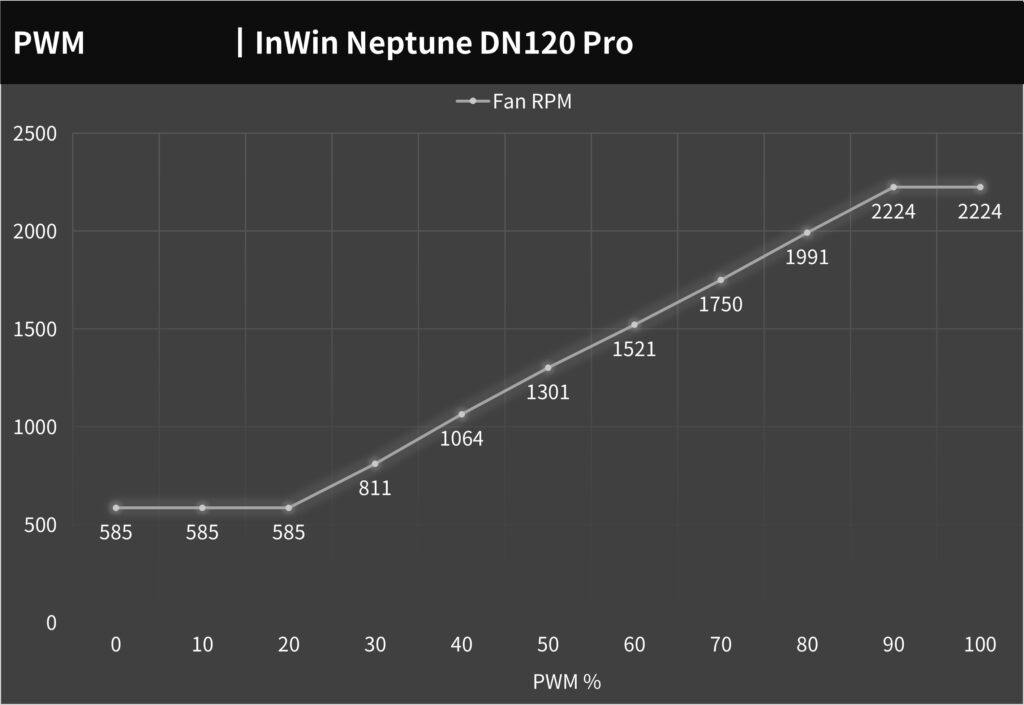
Based on the PQ characteristic curve of the AN120 RGB, when channeled through a liquid cooling radiator, it can sustain an airflow of 41 CFM and an air pressure of approximately 1.3 mm/H2O. Its noise output remains modest, registering at 20.5 dB(A).
In the PWM speed evaluation for the AN120 RGB, it exhibits a speed of 883 RPM when set below 30%. During the testing phase, the variation in speed is relatively pronounced. Nonetheless, it can still achieve a peak of 2180 RPM when set to 100%.
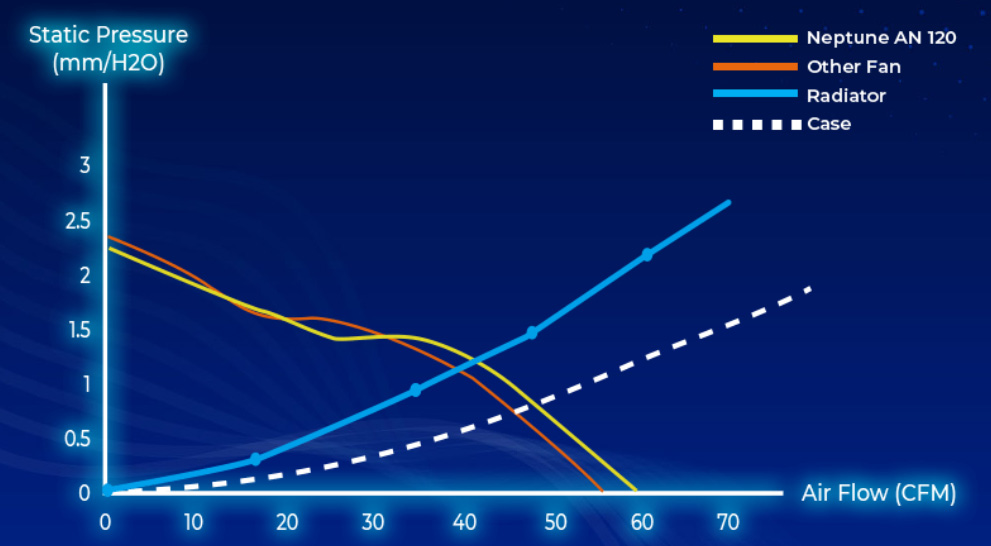
Summarize
The InWin Neptune DN120 PRO performance fan truly stands out with its impressive airflow and air pressure capabilities. What particularly struck me was its operational stability and noise level. Even after shutting off the power post full-speed rotation, the fan continues to spin seamlessly for a while. Simply by manually rotating its blades, you can sense its remarkable stability. It’s worth noting that the more stable a fan is, the quieter its operation.
Furthermore, the Neptune DN120 PRO comes with a commendable 6-year warranty and a price tag of $799 per unit. When pitted against various other performance fan brands, it undoubtedly offers significant value for money.
For those enthusiasts with a penchant for RGB, there’s something in store too. The standard version, the AN120 ARGB fan, doesn’t skimp on performance, boasting a solid PQ curve control and a decent noise ratio. Priced at $1,090 in Taiwan for a set of three, it’s also reasonably accessible for gamers.
If this article is helpful for you, please share this article with your friends on social media. Thank you!
This article is based on the personality of the reviews. You are responsible for fact-checking if the contents are not facts or accurate.
Title: CORSAIR HS80 MAX Wireless Gaming Headset: Enhancements in Connectivity, Battery Life, and Sound Quality